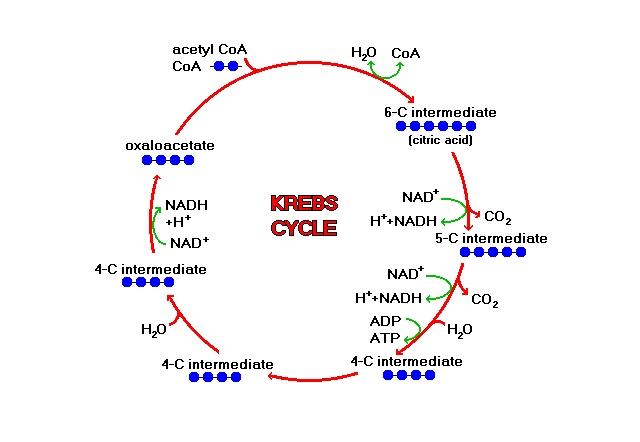|
Krebs
cycle is also known as the citric cycle. In this cycle the pyruvic acid molecules are converted to carbon dioxide, and two
more ATP molecules are made per molcule of glucose. First, each 3-carbon pyruvic acid molecules has carbon dioxide broken
off and the other two carbons are transferred to a molecule called acetyl coenzyme A, while a molecule of NADH is formed from
NAD+ for each pyruvic acid [ =2 for the whole glucose]. These acetyl CoA molecules are put into the cycle, and after the
coenzyme A part is released, some time soon each 2- carbon piece is broken apart into two molecules of carbon dioxide. In
this process, for each acetyl CoA that goes into the cycle, three molecules of NADH, one molecule of FADH2, and one molecule
of ATP are formed. This equals to 6 NADH, 2 FADH2, and 2 ATP per glucose.

Electron Transport Chain and Chemiosmosis
The electron transport chain is a system
of electron carriers embedded into the inner membrane of a mitochondrion, as electrons are passed from one compound to the
next in the chain, their energy is harvested and stored by forming ATP. For each molecule of NADH which puts its two electrons
in, three molecules of ATP are formed, and for each molecule of FADH2, about two molecules of ATP are formed.
At the last step in the electron transport chain, the used
electrons, with some extra hydrogen ions are combined with oxygen to form water as a waste product.
4e- + 4H+ + O2______> 2H2O

|

